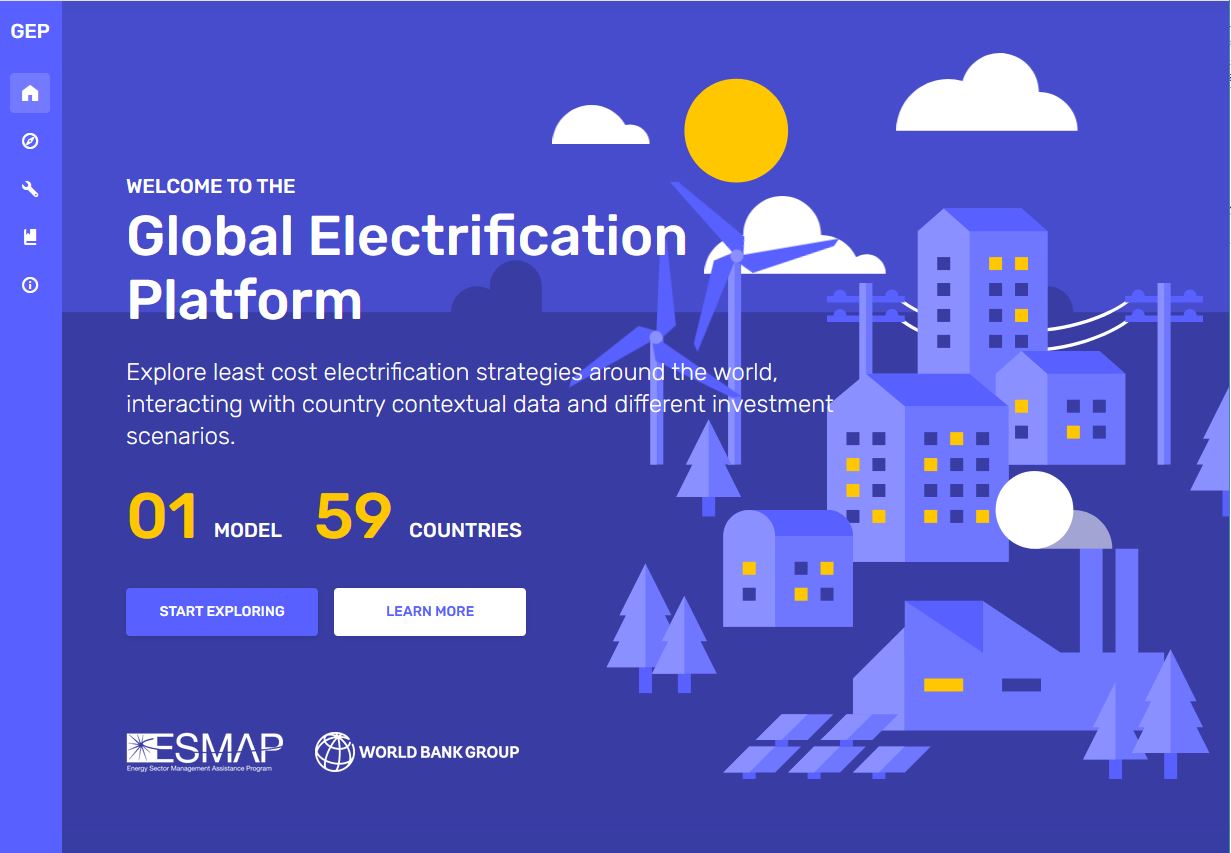The Integrated Electrification Strategies and Planning program aims to increase adoption and improve implementation of national electrification strategies and least-cost electrification plans that use geospatial electrification modelling to integrate grid, mini grid, and off-grid technologies. There are currently 63 countries that have more than half a million people living without access to electricity. This activity will provide technical assistance and operational support for pipeline development and implementation. Its goal is to have at least 50 countries officially adopt integrated electrification strategies/least-cost plans with universal access targets, implementation schedules, modalities, and financing plans.
The activity consists of the following five main pillars:
- Technical assistance and operational support to governments for geospatial electrification planning, pipeline development and implementation, preparation of geospatial-based mini grid investment portfolios.
- Improving the Global Electrification Platform and expanding its applications.
- Developing data standards for electrification planning in coordination with key partners.
- Organizing trainings and convening relevant stakeholders to build capacity of governments, local academia, and other stakeholders for geospatial electrification planning.
- Geospatial analyses for COVID-19 response to identify the cheapest and fastest ways to electrify health centers; determine facilities in areas with mini grid potential vs. those that should be served with standalone solutions; and address electrification planning requirements to deal with the next public health crisis.


